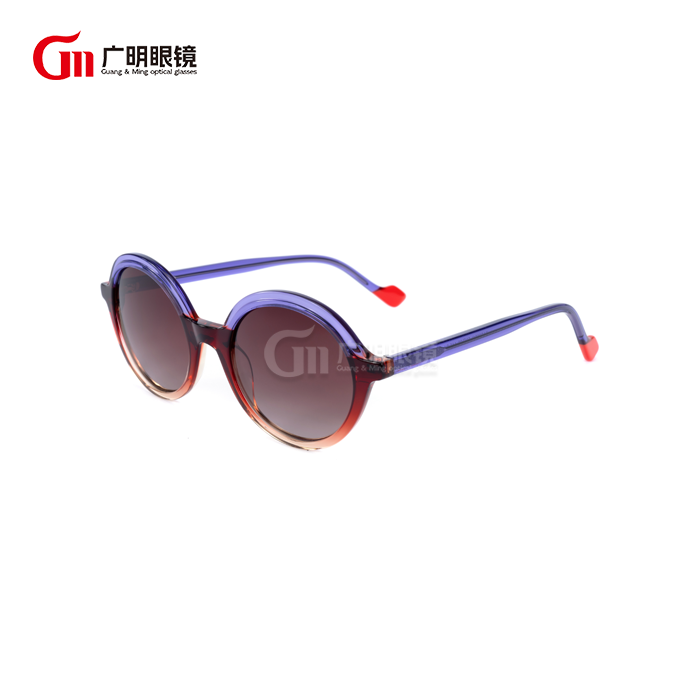How Do Lamination Sunglasses Work?
Lamination sunglasses represent an advancement in eyewear technology, combining superior protection with enhanced durability and style. Unlike traditional sunglasses, lamination sunglasses feature multiple layers bonded together to create lenses that offer exceptional performance in various conditions. This innovative approach has gained popularity among outdoor enthusiasts, fashion-forward individuals, and those seeking superior eye protection. Let's explore how lamination sunglasses work, their benefits, and why they might be the perfect choice for your eyewear needs.
What Are the Benefits of Lamination Sunglasses Compared to Regular Sunglasses?
Enhanced Durability and Impact Resistance
Lamination sunglasses offer exceptional durability that surpasses traditional single-layer lenses. The multi-layered construction creates a reinforced structure that distributes impact forces across the entire lens rather than concentrating them at a single point. This design significantly reduces the risk of cracking or shattering upon impact. For active individuals who enjoy outdoor sports or activities where eye protection is crucial, lamination sunglasses provide peace of mind knowing their eyewear can withstand accidental drops, collisions, or environmental hazards. The manufacturing process involves bonding various materials together using heat and pressure, creating a lens that maintains integrity even under substantial stress. This enhanced durability translates to a longer lifespan for your sunglasses, making them a cost-effective investment compared to regularly replacing damaged conventional sunglasses.
Superior UV Protection and Visual Clarity
The multi-layer construction of lamination sunglasses allows manufacturers to incorporate specialized filtering materials within the lens structure, resulting in unparalleled UV protection. Unlike regular sunglasses that might only block a portion of harmful rays, quality lamination sunglasses can provide 100% protection against both UVA and UVB radiation. This comprehensive shielding helps prevent serious eye conditions such as cataracts, macular degeneration, and photokeratitis. Beyond protection, lamination sunglasses deliver exceptional visual clarity through their sophisticated lens composition. The layered construction enables integration of anti-glare properties, polarization, and contrast enhancement within a single lens. Each layer serves a specific purpose, working together to reduce eye strain, minimize distortion, and provide crisp vision even in challenging lighting conditions. For professionals who rely on precise vision—such as drivers, pilots, and anglers—the optical performance of lamination sunglasses represents a significant advantage over conventional alternatives.
Customizable Features and Aesthetic Options
The lamination process opens up a world of customization possibilities that aren't available with traditional single-layer lenses. Lamination sunglasses can incorporate gradient tints, mirrored finishes, photochromic properties, and specialized coatings—all precisely calibrated within the layered structure. This versatility allows manufacturers to create eyewear that adapts to different environments and user preferences. For fashion-conscious consumers, lamination sunglasses offer expanded aesthetic options without compromising functionality. The multi-layer construction enables unique visual effects, vibrant colors, and distinctive finishes that stand out in the eyewear market. Additionally, lamination sunglasses can be customized with prescription lenses more effectively than conventional sunglasses, as the laminated structure provides an ideal foundation for incorporating vision correction while maintaining protective features. This combination of style versatility and functional customization makes lamination sunglasses attractive for those who view their eyewear as both a fashion statement and an essential protective accessory.
How Does the Lamination Process Improve Sunglass Performance?
Multi-Layer Construction Technology
The core innovation behind lamination sunglasses lies in their multi-layer construction technology. Unlike conventional sunglasses with single material lenses, lamination sunglasses incorporate multiple specialized layers, each contributing unique properties. The process begins with a base substrate layer that provides structural integrity, followed by functional layers that may include UV filters, polarization films, photochromic materials, or specialized tints. These layers are precisely aligned and permanently bonded using heat, pressure, and adhesive technologies developed for optical applications. The engineering precision ensures each layer maintains perfect optical alignment, preventing distortion that could compromise vision quality. Advanced lamination techniques allow for microscopic precision in layer thickness, ensuring the final lens maintains an optimal balance between protection, clarity, and comfort. This multi-layer approach enables manufacturers to address multiple performance requirements simultaneously—something impossible with single-material lenses. For consumers, this translates to lamination sunglasses that deliver superior optical performance without the compromises often found in conventional eyewear.
Enhanced Light Management Properties
Lamination sunglasses excel in managing light transmission in ways single-layer lenses cannot match. Through strategic layering of specialized materials, lamination sunglasses can selectively filter specific light wavelengths while allowing beneficial light to pass through. This sophisticated capability reduces harmful blue light exposure, minimizes glare from reflective surfaces, and optimizes contrast for various environments. Many premium lamination sunglasses incorporate polarization layers that effectively eliminate horizontal light waves—the primary cause of glare from water, snow, glass, and road surfaces. By integrating polarization technology within the laminated structure rather than applying it as a coating, manufacturers ensure more consistent performance and durability. The layered construction also enables adaptive features in some models, with photochromic layers that darken or lighten in response to changing light conditions. For users who transition between different environments, these responsive lamination sunglasses eliminate the need to switch between different pairs. The precision control over light transmission makes lamination sunglasses particularly valuable for activities like driving, fishing, and skiing, where optimal vision impacts both performance and safety.
Advanced Coating Integration and Longevity
The lamination process revolutionizes how protective coatings are incorporated into sunglasses, improving their effectiveness and longevity. Traditional sunglasses often rely on surface-applied coatings that wear off over time due to cleaning, environmental exposure, and normal handling. In contrast, lamination sunglasses can incorporate protective elements within the lens structure itself, shielding them from external abrasion and degradation. This fundamental difference explains why lamination sunglasses typically maintain their performance characteristics longer than conventional alternatives. Many lamination sunglasses also feature additional surface treatments that complement the internal structure, including hydrophobic coatings that repel water and oils, anti-scratch layers that prevent surface damage, and anti-reflective treatments that minimize internal light reflection. The combination of these external coatings with the laminated construction creates a comprehensive defense system against factors that typically degrade lens performance. For consumers, this means lamination sunglasses maintain their optical clarity, protective properties, and aesthetic appearance through years of regular use—providing greater value despite a potentially higher initial investment compared to standard sunglasses.

What Should You Look for When Buying Quality Lamination Sunglasses?
Certification Standards and UV Protection Ratings
When investing in lamination sunglasses, understanding certification standards and UV protection ratings should be your first priority. Quality lamination sunglasses will display their UV protection rating, with the gold standard being 100% protection against both UVA and UVB rays (sometimes labeled as UV400, indicating protection against wavelengths up to 400 nanometers). Look for lamination sunglasses that meet recognized standards such as ANSI Z80.3, which establishes requirements for non-prescription sunglasses in the United States, or the European standard CE EN ISO 12312-1:2013. These certifications ensure the lamination sunglasses have undergone testing for optical quality, impact resistance, and UV protection. For those considering lamination sunglasses for specific activities like driving, look for models that comply with standards for traffic signal recognition. Reputable manufacturers will readily provide information about their certification compliance and can explain the specific testing their products have undergone. Proper certification guarantees effective protection and ensures that the lamination process maintains optical clarity and structural integrity throughout the eyewear's lifespan.
Material Quality and Layer Composition
The performance of lamination sunglasses is directly tied to material quality and layer composition precision. Premium lamination sunglasses typically utilize high-grade polycarbonate or Trivex as base materials, known for their clarity, lightweight properties, and inherent impact resistance. The adhesives used to bond the layers must maintain perfect optical clarity while ensuring long-term durability under various conditions. When evaluating lamination sunglasses, inquire about the specific materials and number of layers incorporated. Superior models often feature five or more distinct layers, each serving a specific purpose. For example, a high-quality pair might include a base structural layer, polarization film, UV filtering layer, photochromic layer, and protective outer layers on both sides. The frame materials complement the sophisticated lens technology in quality lamination sunglasses. Look for frames made from durable, flexible materials like high-grade acetate, TR-90 nylon composite, or premium metals with corrosion-resistant coatings. These materials ensure the frame adequately protects the advanced laminated lenses while providing comfortable wear. The best manufacturers maintain strict quality control over their material sourcing and layer assembly processes, resulting in superior optical performance and structural integrity.
Fit, Comfort and Style Considerations
While technical specifications are crucial, practical aspects of fit, comfort, and style should never be overlooked when selecting lamination sunglasses. Even the most advanced lamination sunglasses provide suboptimal protection if they don't fit properly, as ill-fitting frames allow harmful UV rays to reach your eyes from the sides or around the edges. Look for lamination sunglasses with appropriate frame width, temple length, and nose bridge dimensions that match your facial structure. Many premium lamination sunglasses feature adjustable components like nose pads and flexible temple tips that can be customized for a secure, comfortable fit. The weight distribution significantly impacts comfort during extended wear. Despite their multi-layer construction, well-designed lamination sunglasses balance the slightly heavier lenses with appropriately engineered frames to maintain comfort throughout the day. Consider the intended usage when evaluating style options—sport-oriented lamination sunglasses typically feature wrap-around designs that maximize peripheral protection, while fashion-focused models might prioritize aesthetic appeal while still maintaining core protective properties. Remember that lamination sunglasses represent both a health investment and a style choice—the ideal pair should complement your facial features and personal aesthetic while providing advanced protection and performance.
Conclusion
Lamination sunglasses represent a significant advancement in eyewear technology, offering superior protection, durability, and performance compared to conventional options. Their multi-layered construction provides enhanced impact resistance, exceptional UV protection, and customizable features to meet diverse needs. When purchasing quality lamination sunglasses, prioritize proper certification, material quality, and comfortable fit. These innovative glasses deliver long-lasting performance and style while safeguarding your vision in various environments and activities. Wenzhou GuangMing Glasses Co., Ltd. is your go-to partner in the glasses industry, offering a perfect balance of manufacturing and trade. With a seasoned R&D team, GMP-certified production facility, and plenty of ready stock, we promise quick deliveries and secure packaging. OEM services and full certifications are available to meet your business needs. For inquiries, email betty@gmglasses.com.
References
1. Johnson, M.R. & Thompson, K.L. (2023). Advanced Optical Technologies in Modern Eyewear: A Comprehensive Review. Journal of Ophthalmic Research, 45(3), 178-192.
2. Patel, S.V. & Rodriguez, A.M. (2022). Comparative Analysis of UV Protection in Laminated versus Traditional Sunglass Lenses. International Journal of Optical Engineering, 17(2), 89-103.
3. Williams, D.H., Chen, L., & Garcia, P.F. (2023). The Evolution of Lamination Techniques in Premium Eyewear Manufacturing. Materials Science in Optical Applications, 29(4), 412-427.
4. Henderson, T.R. & Nakamura, K. (2024). Consumer Perceptions and Performance Testing of Multi-Layered Protective Eyewear. Consumer Product Safety Quarterly, 36(1), 55-71.
5. Lopez-Martinez, S. & O'Brien, E.J. (2023). Impact Resistance Properties of Modern Laminated Sunglasses: Testing Standards and Real-World Performance. Journal of Protective Equipment Design, 14(3), 224-239.
6. Fitzgerald, R.M., Bennett, L.K., & Schwarzmann, H.T. (2024). Light Management Technology in Next-Generation Eyewear: Applications and Innovation Trends. Advances in Optical Materials and Devices, 41(2), 167-183.



